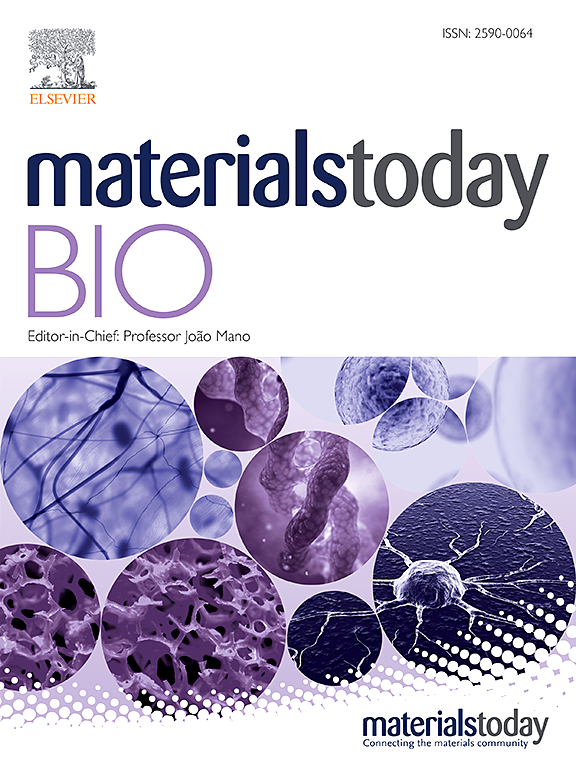Melanoma extracellular vesicles membrane coated nanoparticles as targeted delivery carriers for tumor and lungs
IF 8.7
1区 医学
Q1 ENGINEERING, BIOMEDICAL
引用次数: 0
Abstract
Targeting is the most challenging problem to solve for drug delivery systems. Despite the use of targeting units such as antibodies, peptides and proteins to increase their penetration in tumors the amount of therapeutics that reach the target is very small, even with the use of nanoparticles (NPs). Nature has solved the selectivity problem using a combination of proteins and lipids that are exposed on the cell membranes and are able to recognize specific tissues as demonstrated by cancer metastasis. Extracellular vesicles (EVs) have a similar ability in target only certain organs or to return to their original cells, showing home behavior. Here we report a strategy inspired by nature, using a combination of NPs and the targeting cell membranes of EVs. We implement the EV membranes, extracted by the EVs produced by melanoma B16-BL6 cells, as a coating of organosilica porous particles with the aim of targeting tumors and lung metastasis, while avoiding systemic effects and accumulation of the NPs in undesired organs. The tissue-specific fingerprint provided by the EVs-derived membranes from melanoma cells provides preferential uptake into the tumor and selective targeting of lungs. The ability of the EVs hybrid systems to behave as the natural EVs was demonstrated in vitro and in vivo in two different tumor models. As a proof of concept, the loading and release of doxorubicin, was investigated and its accumulation demonstrated in the expected tissues.

求助全文
约1分钟内获得全文
求助全文
来源期刊

Materials Today Bio
Multiple-
CiteScore
8.30
自引率
4.90%
发文量
303
审稿时长
30 days
期刊介绍:
Materials Today Bio is a multidisciplinary journal that specializes in the intersection between biology and materials science, chemistry, physics, engineering, and medicine. It covers various aspects such as the design and assembly of new structures, their interaction with biological systems, functionalization, bioimaging, therapies, and diagnostics in healthcare. The journal aims to showcase the most significant advancements and discoveries in this field. As part of the Materials Today family, Materials Today Bio provides rigorous peer review, quick decision-making, and high visibility for authors. It is indexed in Scopus, PubMed Central, Emerging Sources, Citation Index (ESCI), and Directory of Open Access Journals (DOAJ).
 求助内容:
求助内容: 应助结果提醒方式:
应助结果提醒方式:


